Farewell Donald Trump
The world has followed the events in the USA with a mixture of horror and disbelief. All of us in Europe have comforted ourselves with the thought: "It can't happen here." I hope that's true. President Trump has left a nation torn apart. Nothing documents this better than the results of the November presidential election, as Figure 1 clearly shows. The Midwest of the country is overwhelmingly red (i.e. Republican), while the East and West coasts are blue (Democratic).
The US is deeply divided, with economic and political power firmly on the East Coast (Wall Street in New York and Washington DC), while the West Coast (mainly California) is home to some of the biggest companies in the world - Microsoft, Amazon, Google, Facebook, Tesla et al. In the middle, the less glamorous heavy industries and, of course, agriculture.
"President Trump is leaving the US a difficult legacy"
I won't go into President Trump's many failings, except to say that he was no friend of Europe or NATO or climate change. Many political leaders form genuine friendships with their counterparts from other nations. But not President Trump, who was sometimes quite rude to the leaders of Germany, Britain, Canada and others, but had a strange quasi-friendship with President Putin. But to be fair, Donald Trump did have at least a few positive accomplishments, such as recent peace efforts in the Middle East and also his early recognition of the threat posed by China. But his strangest and most damaging legacy is his refusal (which he continues to maintain) to accept the result of the November election. Trump is now gone, but according to recent opinion polls, some 40 million of the Americans who voted for him continue to believe that the election was stolen. There is not a shred of evidence for this, and some 30 different courts, including the Supreme Court (with many of its justices appointed by Trump) have rejected such claims.
The US, perhaps the most technologically advanced nation in the world, is now home to some of the craziest ideas imaginable. Let me list just a few, including the theory that millions of Republican votes were mysteriously beamed by voting machines to an Italian space satellite, where they were converted into Democratic votes and beamed back to Earth. The mysterious organization QAnon believes that the world is ruled by pedophiles holding children captive in caves under Central Park in New York. And for German readers, there are those who claim that Angela Merkel is the granddaughter of Adolf Hitler. Completely crazy!
We in Europe and the USA know from the last few months how dangerous social media can be. President Trump fed his fantasies to his many millions of Twitter followers, most of whom then believed them. We all now recognize the problem, which is actually quite simple. Are Twitter, Facebook et al. so-called platforms, a stage on which anyone can express almost anything, be it truth or fiction, or are they publishers like Leuze, who are legally responsible for what they publish and therefore take great care to ensure that their publications are honest and truthful? Interestingly, Twitter acted almost like a publisher for the first time with the suspension of President Trump's account after the recent events in Washington.
A second problem with websites like Facebook and others is that they make many billions in profit every year from advertising from German customers, but pay very little tax in Germany, England or other countries thanks to clever tax arrangements. I predict that 2021 will be the year when the EU and other bodies finally bring these cowboys under control. It could be said that these social media offer almost total freedom to their users and that President Trump, by abusing this freedom to encourage his followers to riot, finally went too far and made it clear that some form of regulation was long overdue.
Mrs. Merkel, as readers will know, has weighed in on this debate, condemning Twitter for its ban on free speech. And the Australian government is at loggerheads with Google because it wants Google to pay genuine publishers for the material it displays on its website. After all, they bear the cost of creating this material.
Better solar panels, better lithium batteries
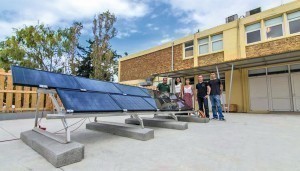 Fig. 2: Graphene perovskite solar panels being tested in GreeceAccording tothe latest IEA (International Energy Agency) report, solar energy will become the most important renewable energy source within the next decade, followed by offshore and onshore wind energy. The world's first graphene-based perovskite solar park has been in operation in Greece for several months and the initial results are very promising when it comes to performance and efficiency. The new solar park is located at the Hellenic Mediterranean University in Crete and is part of the EU's graphene flagship. It consists of nine graphene perovskite panels with a total area of 4.5m2 and a total output of around 261 watt-peak (Wp). The panels have been in continuous operation since June. It will take a full year of operation before all the results can be reported. Figure 2 shows the test system.
Fig. 2: Graphene perovskite solar panels being tested in GreeceAccording tothe latest IEA (International Energy Agency) report, solar energy will become the most important renewable energy source within the next decade, followed by offshore and onshore wind energy. The world's first graphene-based perovskite solar park has been in operation in Greece for several months and the initial results are very promising when it comes to performance and efficiency. The new solar park is located at the Hellenic Mediterranean University in Crete and is part of the EU's graphene flagship. It consists of nine graphene perovskite panels with a total area of 4.5m2 and a total output of around 261 watt-peak (Wp). The panels have been in continuous operation since June. It will take a full year of operation before all the results can be reported. Figure 2 shows the test system.
Graphene perovskite photovoltaics (G-PE PVs) perform better at high temperatures than conventional PV panels, and in terms of stability, only minor degradation was observed after three months. Each graphene perovskite module contains graphene and related 2D materials such as molybdenum disulphide, which significantly increases performance and stability. The active layer of the panels is a mixed triple cation lead halide perovskite. The cost of graphene-perovskite panels is comparable to that of other solar cells.
G-PE PVs can also be used as an additional PV element on existing technologies, such as tandem silicon modules, and this combination will result in module efficiencies of over 30 %. Electricity costs could fall to 0.10 Euro/Wp and perhaps even 0.04 Euro/Wp.
Better batteries
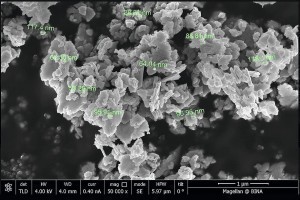 Fig. 3: Nano-sized particles enable fast ion mobilityLithium batterieshave made e-mobility a realistic alternative to fuel engines. But there is still room for improvement. Firstly, reducing the cost of the batteries, but also their weight, i.e. their energy density. Secondly, their service life (number of charge/discharge cycles) and finally the time they take to recharge. Progress is being made in all these areas. However, non-technical people do not realize, I am sure, that there is a price to pay for fast charging, namely our old friend, the ohmic voltage drop. Fast charging batteries means energy loss (as heat), heavier cables and plugs and additional costs. The Israeli company StoreDot(www.store-dot.com) is one of several companies promising fast charging of lithium batteries. There is a lot of technical information on their website, highlighting the clever use of organic materials, whose elasticity can be important to compensate for the volume change in the charge/discharge cycle. Figure 3 shows the nanostructured active mass that enables fast ion mobility. StoreDot has entered into a partnership with BP (formerly British Petroleum). An important feature of StoreDot's technology is that it can be used in existing lithium-ion battery systems.
Fig. 3: Nano-sized particles enable fast ion mobilityLithium batterieshave made e-mobility a realistic alternative to fuel engines. But there is still room for improvement. Firstly, reducing the cost of the batteries, but also their weight, i.e. their energy density. Secondly, their service life (number of charge/discharge cycles) and finally the time they take to recharge. Progress is being made in all these areas. However, non-technical people do not realize, I am sure, that there is a price to pay for fast charging, namely our old friend, the ohmic voltage drop. Fast charging batteries means energy loss (as heat), heavier cables and plugs and additional costs. The Israeli company StoreDot(www.store-dot.com) is one of several companies promising fast charging of lithium batteries. There is a lot of technical information on their website, highlighting the clever use of organic materials, whose elasticity can be important to compensate for the volume change in the charge/discharge cycle. Figure 3 shows the nanostructured active mass that enables fast ion mobility. StoreDot has entered into a partnership with BP (formerly British Petroleum). An important feature of StoreDot's technology is that it can be used in existing lithium-ion battery systems.
Another company developing next-generation lithium batteries is Aceleron(www.aceleronenergy.com). These batteries also allow for fast charging, and the actual battery is assembled by compression, as opposed to welding or gluing. It can be easily taken apart for repair or recycling.
A few weeks ago, a team at Penn State University* reported success with what they call a thermally modulated Li-Fe-P system. The low-cost, lightweight battery, Aceleron claims, offers a range of 300 km and can be recharged in 10 minutes. The battery features a thin nickel foil that allows the battery to reach the optimum charging temperature of 60°C in 90 seconds. It is also cobalt-free and could - it is claimed - have a service life of around 3 million km.
*Thermally modulated lithium iron phosphate batteries for mass-market electric vehicles. Xiao-Guang Yang, Teng Liu & Chao-Yang Wang Issue Nature Energy Vol. 2476, Jan 18th 2021
What comes after lithium?
As the lightest of the so-called alkali metals, lithium batteries seem to offer the highest theoretical energy density. But it is not an abundant element. A recent overview of sodium battery technology makes it clear that this technology offers only slightly less power than its lithium counterpart, especially for static applications, but at a significantly lower cost. It could therefore be more significant than lithium technology for large-scale energy storage. Figure 4 shows the battery configuration. Figure 5 shows performance compared to lithium technology.
Source: ACS Energy Lett. 2020, 5, 11, 3544-3547. published on: October 23, 2020. https://doi.org/10.1021/acsenergylett.0c02181
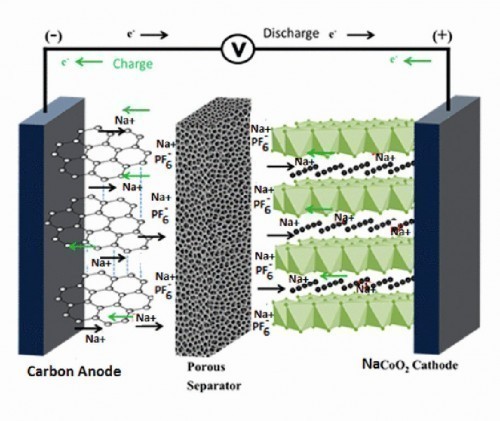 Fig. 4: Structure of a sodium battery
Fig. 4: Structure of a sodium battery
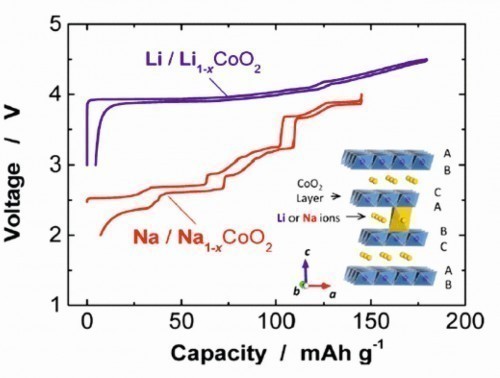 Fig. 5: Sodium battery compared to lithium technology
Fig. 5: Sodium battery compared to lithium technology
And calcium?
A calcium battery could also offer many advantages. This technology is still at the laboratory stage, and the team at the Helmholtz Institute in Ulm, headed by Professor Maximilian Fichtner, is probably the world leader.
A recent publication is: Z Li et al. issue Energy & Environmental Science (2019) DOI 10.1039/c9ee01699f
In blue skies
Conventional batteries work on the basis of positively and negatively charged ions that move under a potential gradient. But what if the anions could be replaced by free electrons? These are called electrons. Professor Scott Warrant of the University of North Carolina, USA, has published a groundbreaking paper based on the species (Y2CF2)2 yttrium difluorocarbene, which can reversibly lose its two fluoride atoms. Theoretically, a battery based on this approach could have twice the energy density of a lithium battery, but the concept is still at a very early stage.
Source: D L Druffel et al. J. Phys. Chem. Letters (2020) vol 11, ss. 9210. DOI: 10.1021/acs.jpclett.0c02266
Conclusion:
In both solar energy (photovoltaics) and batteries, after long years of stagnation, there are exciting new developments that will make these technologies increasingly useful and cost-effective. And perhaps production will also become "greener".
How we buy and pay for what we use
Germans have a reputation for being sensible with their money and especially averse to debt. This is probably the reason why the use of credit cards is less widespread in Germany than in the USA, for example. But companies want us to buy and are not too worried if we borrow money to do so. For the past year or so, there have been new ways to entice consumers to buy products they can't actually afford. Of course, this is not entirely new. For decades, sellers have been offering so-called installment plan schemes, where the buyer pays so and so much every month for perhaps 24 months and only then do they actually own the purchase. The cost of such schemes, often known as "never-never", can be 20-30% more than a one-off payment. For around ten years, the Swedish company Klarna(www.klarna.com), which also owns the German company SOFORT AG, has been enticing customers with the slogan "Buy now, pay later." For some, this arrangement works well. Unlike installment plan, the department store has to pay Klarna to participate in the program.
New cars are not cheap. If a car manufacturer offers to virtually give them away, it will attract interest. Lynk and Co, a Chinese-owned brand, has announced a new "hybrid ownership" payment system that allows drivers to recoup the cost of the car and possibly even make a small profit. The company, which will soon start delivering cars to Europe, will allow drivers to subscribe to their new sporty utility vehicle for €500 per month, with the option to rent it out to other people to earn the money back.
Car owners can set their own prices and terms for the rental and share a digital key for their customers to drive without having to physically exchange the key. Lynk and Co was developed by Volvo as a digital alternative to conventional cars. The concept has since been further developed by Geely, the Chinese car company that bought Volvo a decade ago. The brand was launched in China three years ago and its cars will soon be available in the Netherlands and Sweden before being rolled out in other European countries. A growing number of drivers are opting out of traditional ownership models and opting for a Netflix-style subscription. Volvo introduced a similar program called "Care by Volvo" a few months ago. The driver selects one of the models, subscribes to it online and the car is delivered to them. Subscriptions are available from as little as 600 euros per month. The manufacturer encourages people to act as entrepreneurs and perhaps set up their own car club. An interesting idea - but one with risks and it requires proper management.
A modern approach to recycling
 Fig. 6: T.H. de Larauze has about 200,000 refurbished cell phones for saleEachnew iPhone is slightly better than its predecessor and the price remains high. People love to show off that they have the latest model - but what happens to the predecessor that still works perfectly? A French entrepreneur, Thibaud Hugo de Larauze (Fig. 6), has founded a company Back Market www.backmarket.com (a clever play on words with the term "Black Market"), which not only buys up cell phones and offers them for sale (a few weeks ago they had around 200,000 in stock), but also a wide range of other electronic products.
Fig. 6: T.H. de Larauze has about 200,000 refurbished cell phones for saleEachnew iPhone is slightly better than its predecessor and the price remains high. People love to show off that they have the latest model - but what happens to the predecessor that still works perfectly? A French entrepreneur, Thibaud Hugo de Larauze (Fig. 6), has founded a company Back Market www.backmarket.com (a clever play on words with the term "Black Market"), which not only buys up cell phones and offers them for sale (a few weeks ago they had around 200,000 in stock), but also a wide range of other electronic products.
A similar business is Tradetech.com. Back Market does not refurbish what it sells itself, that is done by hundreds of subcontractors. But it does offer a 1-year guarantee on what it sells. Experts believe that used models account for around 10% of cell phone sales. The customer has the choice between a new but inexpensive cell phone or a top model that is perhaps 2 to 4 years old with a discount of up to 40 %. A similar but smaller company is UK-based Tech.trade, and there are almost certainly others. The message is that refurbishing phones and computers is big business - and it's expected to grow. Will we be ready to buy such devices?
Artificial wood - a new material?
Researchers at the Massachusetts Institute of Technology have taken the first step towards creating wood without growing a tree. They believe this could one day help reduce deforestation. They say their initial work suggests that one day they will even be able to control the shape in which the wood grows, meaning they could make an entire table from a few cells in the lab without the need for assembly. The team grew tiny wood-like structures from an initial sample of living cells that they extracted from zinnia leaves - a plant in the daisy family - without the need for soil or sunlight. The extracted cells were then placed in a liquid that allowed them to multiply before being placed in a gel where the cells could be tuned to the desired shape. The process flow is shown in Figure 7 .
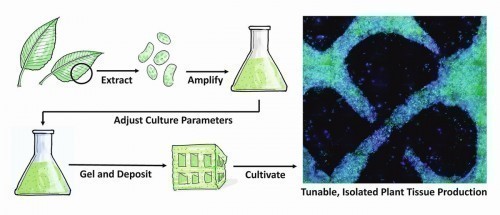 Fig. 7: Process flow and enlarged view of the grown cell structure
Fig. 7: Process flow and enlarged view of the grown cell structure
The gel acts as a scaffold and provides the cells with a specific structure into which they can grow. When they turn into wood-like cells, the structure solidifies into a rigid substance, similar to wood. Two plant hormones called auxin and cytokinin in the gel control how much lignin the cells produce - a substance that gives wood its strength.
The team can shape this gel into any desired form so that the cells then produce a wood-like structure in a desired geometry. At the moment, the team has only produced tiny wood-like structures of a few centimeters, so making larger objects is the next step, as is experimenting with other plant cells. This is science that could change the world's forestry industry - and perhaps free up land for growing food.
Source: (Open Access) Tunable plant-based materials via in vitro cell culture using a Zinnia elegans model, Ashley L. Beckwith et al. Journal of Cleaner Production vol. 288 (2021) ss.125571
A triumph of micro-printing
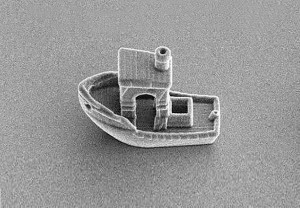 Fig. 8: Micro-printed bow shipScientistshave created the world's smallest boat, measuring just 30 micrometers. It is small enough to sail on the inside of a human hair. Despite its microscopic size, features such as the open cockpit, portholes and a funnel are clearly visible. The boat (Fig. 8) was created by scientists at Leiden University in the Netherlands using a 3D printer to investigate how microswimmers, such as bacteria or sperm, move through liquids. The boat can move through liquid through a chemical reaction, using a small piece of platinum that reacts with hydrogen peroxide in the environment to create a propulsive force.
Fig. 8: Micro-printed bow shipScientistshave created the world's smallest boat, measuring just 30 micrometers. It is small enough to sail on the inside of a human hair. Despite its microscopic size, features such as the open cockpit, portholes and a funnel are clearly visible. The boat (Fig. 8) was created by scientists at Leiden University in the Netherlands using a 3D printer to investigate how microswimmers, such as bacteria or sperm, move through liquids. The boat can move through liquid through a chemical reaction, using a small piece of platinum that reacts with hydrogen peroxide in the environment to create a propulsive force.
Artificial microswimmers already exist, but they are usually made using chemical methods that result in simple shapes such as rods and spheres. However, creating different shapes at this scale may allow scientists to find the best design for synthetic microswimmers and determine how they can best move through the body and be used for drug delivery or diagnostics.
The tugboat model is called a 3D benchy (for benchmark) and is a common test for 3D printers due to its challenging geometric features, such as portholes and an open cabin. To create such a tiny object on a 3D printer, the team used a Nanoscribe 3D microprinter with a process known as 2PP (two-photon polymerization). Each layer of the boat is created inside droplets of material that hardens through the use of extremely precise lasers. By moving the laser through the droplet in a controlled manner, the desired float shape can be written.
"Because the printing takes place inside the droplet and we print layer by layer, we can maintain the open space inside the tugboat cockpit," says Ms. Kraft, one of the team members.
3D Benchy is a structure that was developed to test macroscopic 3D printers because it has several challenging properties, and it was natural to test it at the micrometer scale as well. Researchers around the world are increasingly looking at tiny objects that can be inserted into the body and float to a desired location to monitor an area or release a drug.
Scientists at Cornell University in the US revealed in August that they have found a way to attach four legs to tiny computer chips that can bend when illuminated by a laser, creating a walking-like motion. They believe that millions of these tiny cmit legs the width of a human hair could soon be made to actually walk through the human body to target brain tumors or cancer cells that are in a position that is too difficult for surgeons to operate on - for example, if a tumor is located on a very sensitive part of the brain.
Rachel P. Doherty et al. Catalytically propelled 3D printed colloidal microswimmers. Soft Matter (2020), DOI: 10.1039/DOSMO1320J
A new type of membrane
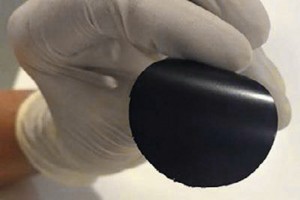 Fig. 9: Slice of the new graphene oxide polymer membraneAnovel, self-organized membrane whose permeability to a range of ions varies strongly with pH has been fabricatedfromgraphene oxide and polymeric heterostructures. The researchers believe it could be useful for applications ranging from battery production to the purification of radioactive waste. A sample of the membrane is shown in Figure 9 .
Fig. 9: Slice of the new graphene oxide polymer membraneAnovel, self-organized membrane whose permeability to a range of ions varies strongly with pH has been fabricatedfromgraphene oxide and polymeric heterostructures. The researchers believe it could be useful for applications ranging from battery production to the purification of radioactive waste. A sample of the membrane is shown in Figure 9 .
Tunable, selectively permeable membranes are commonly used in nature for chemical signaling and other purposes. Nerve cells use ion pumps and ion channels, and cells use them to select specific ions. Synthetic, partially permeable membranes, however, are far less selective and usually control flux only by the size of the pores or the relative concentrations of the solutions on either side.
Dr. Novoselov and colleagues from the National University of Singapore mixed a suspension of graphene oxide flakes into the liquid polymer polyethylenimine. Due to entropic effects, the flakes were covered by the polymer. When the solvent was evaporated, a highly ordered, self-organized membrane structure of alternating graphene and polymer layers remained. Placed between a concentrated sugar solution and pure water, the membrane was relatively impermeable. However, when the researchers added hydrochloric acid to lower the pH to 2, the polymer chain became protonated and osmosis into the sugar solution accelerated. "Our internal structure acts like an acid reservoir," explains Dr. Novoselov. Water flows in and tries to dilute this acid, and this water is pressed out again on the other side.
The researchers then investigated the permeability of the structure for ions. Here the results were more complex: if the structure contained long polyethylenimine chains, it was completely impermeable to all the ions examined. Structures containing shorter chains of the same polymer, on the other hand, allowed some types of ions to pass through. The picture was puzzling, however, and the researchers are still working to fully explain it. For example, cesium ions alone could not pass through the membrane, but when potassium ions were added, they began to cross the membrane. The authors noted that such results could be of enormous importance, for example in drug delivery or as components of ionic transistors and in a variety of devices. The technology could also be developed as a clean alternative for extracting lithium for use in lithium-ion batteries or for removing radiocesium - a major by-product of uranium fission - from nuclear power plant wastewater.
Commenting on the work, Professor Vladimir Tsukruk from the Georgia Institute of Technology in the US said: "I would have thought that the properties of these two materials had already been thoroughly explored, but it shows that by cleverly combining them you can achieve something remarkable. He would be interested in further work on the effect of the charge of the polymer on the permeability of the structure. If you could attach electrodes and change them electronically, that would be really interesting for externally controlled permeation."
Source: D. V. Andreeva et al, Nat. Nanotechnol., 2020, DOI: 10.1038/s41565-020-00795-y
Address of the author
Dr. Anselm T. Kuhn, c/o Metal Finishing Service Ltd, 105 Whitney Drive, Stevenage, Herts, SG14BL/GB.
Fax: +44/1438-906306, e-mail:
The political content printed here does not necessarily reflect the views of the publisher and editors, but are the personal opinions of the author.


